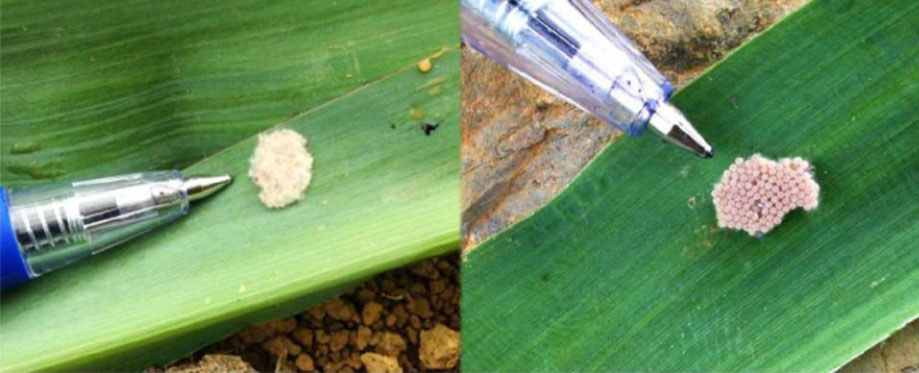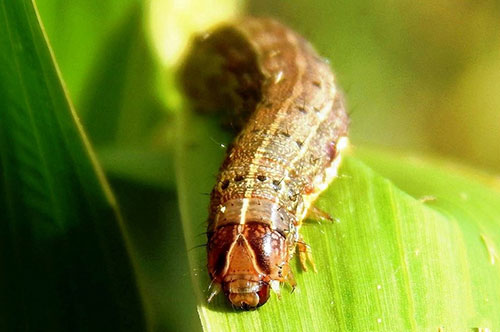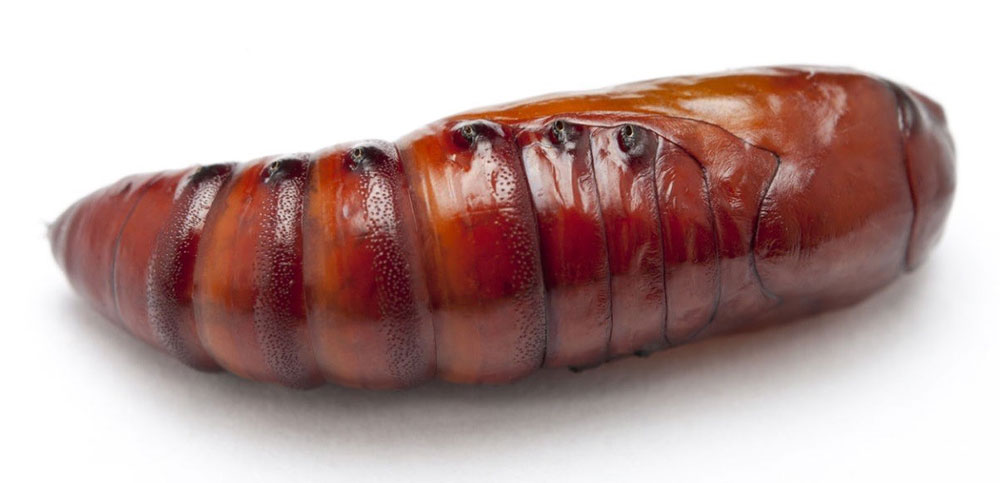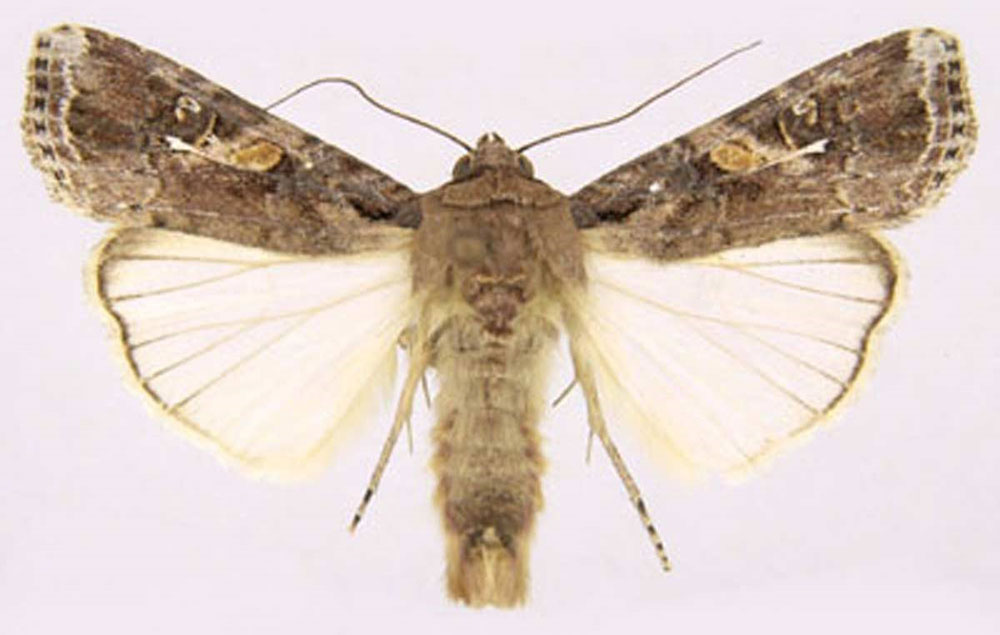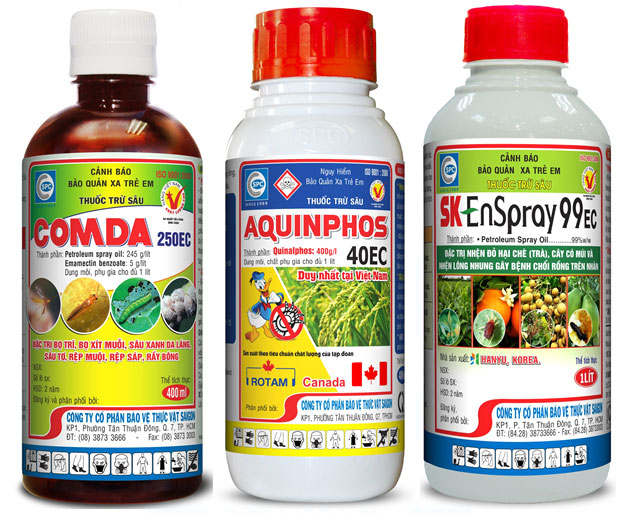|
Fall army worm
22/11/2021
DAKLAK MOBILE PLANT DOCTOR TEAM Fall army worm is a "new pest", causing damage in some maize (maize) growing areas in the northern provinces such as Son La, Lai Chau, Yen Bai, Hoa Binh, Nghe An, Thanh Hoa... And in Dong Nai. Pests damage mainly on the herbaceous family, causing heavy damage on maize from seedling stage to fruiting, yield loss can be up to 60%, early and severe damage to maize may have to be sown again. In tropical conditions, the worm has a relatively short life cycle of about 30 days, lays many eggs, bites hard, spreads widely, is resistant to products, and difficult to thoroughly control. Fall Army worm, scientific name: Spodoptera frugiperda (J.E.Smith), of the order: Lepidoptera, moth family: Noctuidae. The FAW has a very wide host spect, causing damage to more than 80 species of plants, preferring to bite on herbaceous plants such as maize, rice, sorghum, sugarcane and also on soybeans, peanuts, sweet potatoes, and tomatoes. , vegetables, cotton, are included in the European quarantine list. The head has white dots, the letter Y is upside down, the body has alternating white and brown stripes, hairy spines, 8 legs * Biological properties: FAW belongs to the group of insects with complete metamorphosis. In hot-humid conditions, the life cycle is about 30-35 days, in the year of continuous reproduction 4-6 litters. Low temperature, only 1-2 litters a year. The life cycle includes the following stages: - Egg: Spherical, flat bottom, about 0.4mm in diameter, 0.3mm in height, ivory-white, laid in the evening on the underside of leaves below, eggs laid in nests of about 100-200 eggs, tightly packed 1 or 2 layers, covered with a layer of white silk taken from the lower abdomen of the female butterfly. Eggs hatch after 3-5 days. The upper surface of eggmass is covered with fine hair and the lower surface - larvae: Have 6 of age level (sometimes 5). Newly-hatched larvae have a black head, 2-3 year- old larvae, green body, white stripes with black spots. 4 - 6 years old worm, head is reddish brown, with white spots, body is dark brown with green, with white and brown stripes running along the body, on the body there are many black spots, there are hairy spines, if the population is high or lacking food, worms can turn black and eat each other... The identifying feature of fall autumn worm is the head has an upside-down Y, yellow, at the end of the abdomen there are 4 black dots arranged in a square. The larval stage lasts about 14 days in summer, 30 days in cold weather. Worms have the ability to fake death, curling up when being touched. Damage is mainly in the evening and tends to move in groups to find food.
- Pupae: The pupal stage in the soil, buried about 2-8 cm deep. The pupa is oval, 1.5 cm long, reddish brown, lasting about 8-9 days in the Summer, 20-30 days in the Winter.
- Adults (Moth/butterfly): The larvae are about 1.7 cm long, with a wingspan of about 3.8 cm, the forewings are gray-brown, with gray spots, the wings are membranous, silver-gray, with dark margins at the edges. The Adults are moths, strongly active at night when the weather is cool and humid. The FAW has the ability to multiply rapidly, the female can lay up to 2,000 eggs. The adult stage is about 10 days long (sometimes up to 21 days). Insects have the ability to fly far thanks to the wind
- Harm: Fall army worms cause damage by eating leaves and stems. newly hatched larvae, bite the leaves below, first scrape the epidermis, leaving a thin film, the worms eat the leaves into small holes, large worms feed from the edge of the leaf inwards and eat in long rows on the leaf blade. Usually on a tree, only 1 (or 2 worms) can be seen due to cannibalism when living in close proximity. The old worms (ages 4-6), the destructive power is stronger than the young ones, leaving the veins, leaves, and stems tattered and torn. Damage caused by leaf worms when the plants are young can be compensated by producing new leaves, however, if the old worms get into the trumpets, eat off the growth tops, causing the shoots to die, the damage will be large and yield can take from 30 to 60%. The worm can also bore into the fruit, eating seeds like the fruit borer (Helicoverpa sp), however unlike the fruit borer, which tends to bore from the top down through the corn silk before eating the seeds at the top of the fruit, the fall autumn worm eats it. broken by boring through the outer leaves to eat the seeds inside. - Natural enemy: Autumn worm has many species of parasitic natural enemies such as: Black bee with white cocoon: Cotesia marginiventris, Chelonus lexanus bee... Natural enemies that eat prey such as (earwig): Labidura, spiny beetle Labidura riparia, beetle Orius insidiosus, birds, ants, rodents, etc. Many natural enemies cause diseases such as viruses, parasitic fungi, nematodes, bacterium... - FAW and genetically modified varieties (GMOs): Initial records (in Son La) indicate that some GM varieties on the market are relatively less susceptible to pests than conventional hybrid maize varieties. - Chemical and biological products: In order to effectively prevent the fall armyworm, it is necessary to apply the following general measures: 1. Plant early or plant early varieties, if possible. Harvesting early helps to avoid the peak of pests at harvest time. 2. Use resistant varieties, less harmful pests. 3. Crop rotation, intercropping. 4. Use light traps/Phromones traps to detect the appearance of butterflies for early prevention of newly hatched eggs and worms. 5. Use of pesticides: Pending testing to determine the active ingredient, appropriate dosage, one of the following formulations may be temporarily recommended: a. Aquinphos 40EC: 60 ml/16 liter dose. b. Comda gold 5WG: Mix 2 packs of 15g/16 liters c. Mixture of Aquinphos 40EC + SK 99EC oil: respectively 40 ml + 50 ml/16 liters. d. Mix of Comda 5WG + SK oil: Corresponding ratio: 2 packs of 15g + 50ml/16 liters. e. Mixed Aquinphos + Comda 5WG + SK oil: Ratio of 40 ml + 2 packs of Comda 5WG + 50 ml of SK 99EC/16 liter oil. f. Large trees, difficult to spray, can be sprayed with granules with drainage properties or fumigated into the trumpets like Sago super 3G (if conditions allow). Note: - Need to spray enough water - recommended product. - Larvae, have not yet entered the trumpets: Spray on foliage, pay attention to spray on the underside of leaves (with eg gmass), older worm: Spray from the top down to get the products inside the trumpets - Spray early in the morning or in the cool of the afternoon (because worms often eat in the cool afternoon), if it does not rain - Should be sprayed when newly-hatch larvae. - If possible, spray the motorized pump better than the hand one. - Should alternately spray products with different modes of action (Contact - Internality - fumigation) and different chemical bases to prevent insect resistance. - Early prevention, will reduce the number of sprays in the later stages. Light traps and pheromones ones can be placed to detect butterflies early and prevent pests from being more effective. - Larvae, have not yet entered the trumpets: Spray on foliage, pay attention to spray on the underside of leaves (with eggs), older larvae: Spray from the top down to put product inside the trumpets. - Spray early in the morning or in the cool of the late afternoon (because worms often eat in the cool afternoon), if it does not rain - Should be sprayed when newly-hatched larvae. - If possible, spray motorized pump better than the hand pump. - Should alternately spray prroducts with different modes of action (contact – internality - fumigation) and different chemical bases to prevent insect resistance. - Early prevention, will reduce the number of sprays in the later stages. - Light traps and pheromones traps can be placed to detect butterflies early and prevent pests from being more effective.
|
To prevent, in addition to plowing and burying weed seeds, collecting weed stalks and stumps left after tilling the land to burn, not letting weeds produce seeds in production fields, etc., the use of chemical products is still a measure. optimal because of its ability to thoroughly kill weeds, reduce labor and take advantage of more time than manual weeding.
Miner has the scientific name Phyllocnistis citrella Staint., family Phyllocnistidae, order Lepidoptera. The miner occurs in many countries in the tropics and subtropics. The main host of the miner is the citrus family - Rutaceae. In addition, the miner also attacks mangosteen and some other plants.
Adult is a small planthopper, with a body 2-3 mm long, the whole body is ash gray, slightly greenish, the wings are opaque with many small brown spots.Eggs are oval, 0.3 mm long, have a pointed end and are attached directly to the leaf surface, leaf axils.
Green bugs specialize in the fruit of citrus groups (oranges, tangerines, lemons, grapefruits, kumquats...), some people call them orange bugs, or orange suckers. Their scientific name is Rhynchocoris poseidon or Rhynchocoris humeralis.
In Vietnam, yellow leaf curl disease is very common on papaya trees, especially the disease is often severe in areas of high and continuous planting, areas with hot and arid climates. The disease has significantly reduced the yield and quality of papaya. Gardens that are infected early when the plants are young may not yield. However, up to now, many gardeners still do not know the cause and how to fix it.
Spider mites are common pests on citrus trees, especially in hot and dry climates that are suitable for spiders to grow and cause severe damage.The group of harmful spiders is usually very small in size, unlike the natural enemy spiders.
This group includes species that are generally very small in size, causing damage by sucking plant sap (on leaves, fruits, branches, stems).
There are many species of mealybugs present on the group of Oranges,Tangerines,Grapefruits and Lemons (Citrus), which can be divided into 2 groups:
+ Group of sticky mealybugs with common varieties such as Lepidosaphes, Aonidiella, Coccus and Saissetia.
+ Group of flower mealybugs with common genera and species such as Pseudococcus, Planococcus and Icerya purchasi.
Dry branches and berries disease often appear to be common damage on coffee gardens during the rainy season. The disease causes death of branchs, dry fruit, severely affects the canopy structure and coffee yield if not paid attention to prevention.
Pink disease commonly causes diseases on rubber plantations in the rainy season, especially on garden from 4-8 years old. This year, rubber has to go through a period of severe drought, weakening the tree, so now in tnshe rainy season it is easy to get infected. Therefore, it is necessary to pay attention to good management to avoid affecting the garden.
In recent years, the area of citrus has been expanded because it is a fruit tree with high economic efficiency. However, in order to sell at a high price, not only in quality but consumers also require the external beauty of the fruit, so pest management on citrus is a matter of great concern to farmers. The hot season is a favorable condition for thrips to develop and cause damage, affecting the commercial value of fruit.
- Headquarters
- SAIGON PLANT PROTECTION JOINT STOCK COMPANY
- RQ 1, Nguyen Van Quy St., Tan Thuan Ward, HCM City
- Tax code: 0300632232
- Tel: (028) 38 733 295 - 38 732 077
- Fax: (028) 38 733 003 - 38 733 391
- Website: www.spchcmc.vn - Email: info@spchcmc.vn
- SAIGON PLANT PROTECTION COMPANY
- SAIGON PLANT PROTECTION JOINT STOCK ENTERPRISE
- Lot C1-C3 Hiep Phuoc Industrial Park, Hiep Phuoc Commune, HCM City
- Tel: (028) 3873 4089 - Fax: (028) 3873 4086
- Affiliated Unit
-
- Quick Links
- Home
- About us
- Career Opportunities



